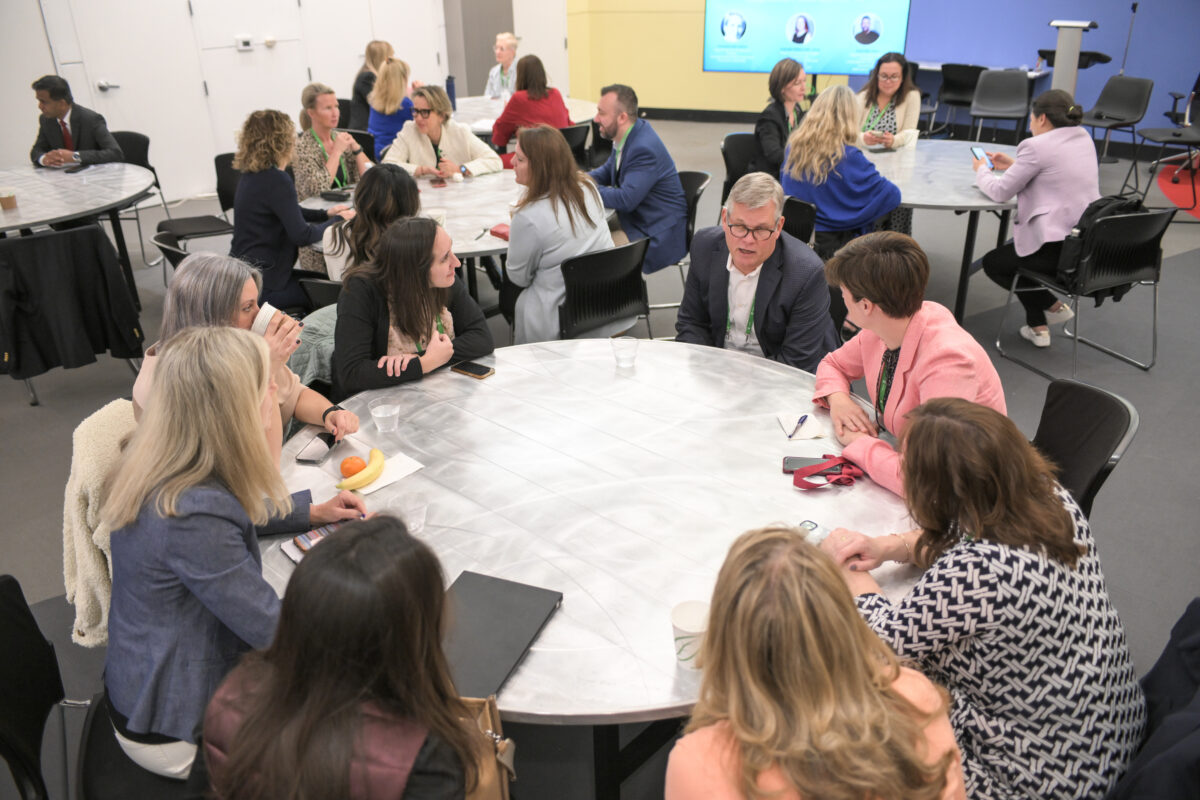Skift Take
As the pandemic lingers, event planners will have to rely on hybrid models to boost attendance numbers, but what will that mean for the in-person experience?
Our State of the Event Industry report revealed an industry on hold, but preparing for recovery. When asked in November, almost two thirds of event planners said they were either unwilling to attend any kind of in-person event, or only willing to consider small and local gatherings.
On the other hand, the majority of respondents (57.5 percent) anticipated that in-person events would begin to return either in the second or third quarter of 2021. And the most recent vaccine rollout projections suggest that these predictions were on the money.
It is an outlook that leaves room for cautious optimism while also throwing down the gauntlet for a whole new set of challenges. As long as in-person events need to remain small and local, many event planners will be forced to supplement their attendance levels with a virtual audience. Hybrid events existed before the pandemic, but the online component was usually secondary — not an essential part of the event’s revenue model. The old formulas no longer apply, and event planners may need to rethink how they structure their in-person experiences to accommodate the online market.
To get the industry’s take on how these new hybrid models will affect the live event experience, we spoke to three experienced event planners from across the US: Briana Snellgrove, CEO of Social ICON Agency in Florida; Karen Hartline (CMP), Director of Events at Homepoint Financial in Nevada; and Megan Henshall (CMP, DES), Account Manager of Global Events for Google in California.
What the New Hybrid Will Look Like for Each Audience
In the near-term at least, virtual participants are likely to far exceed the in-person audience. What will this shifting paradigm mean in concrete terms?
DURATION MATTERS, BUT QUALITY IS JUST AS IMPORTANT
Conventional wisdom tells us that online audiences have shorter attention spans, and that virtual content should be condensed into bite-sized segments. But if the livestream is broadcast from an in-person event, will the programming be just as short for the onsite audience? A recent Wired article suggests that the answer is yes.
All three of our interviewees agreed that hybrid events will need to be shorter in order to accommodate virtual attendees, but they had different ideas about how this dynamic will unfold.
When Karen Hartline attended a Digital Event Strategist Certification last year, the instructions were fairly straightforward: For every hour of content delivered in person, aim to condense the material into 20 minutes (or under) for an online audience. But what if the event planner needs to cater to in-person and remote audiences simultaneously?
Arguably, keeping a quick pace may be more crucial than sticking to a short timeframe.
Speaking from her own experience, Briana Snellgrove suggests that panel discussions can be a bit longer than standard speaker presentations. Importantly, this conversational format allows the audience to hear from a variety of perspectives in quick succession. As a case in point, her company recently brought together a group of high-ranking navy officers for a two-hour discussion on leadership, and the hybrid event’s online reception was overwhelmingly positive despite its extended duration. When asked to explain her winning formula, she offered the following tips:
- Create a live stage setup instead of broadcasting talking heads in front of computers.
- Break the conversation up into short, topical snippets.
- Make sure that the content offers real value to the audience.
- Leverage influence and star power wherever possible — online audiences are more likely to stay for high-calibre speakers and entertainers.
- Incorporate a brief break into the schedule.
Snellgrove added that the time of day may also be a factor that planners often overlook. “Our online attendance levels really trail off for virtual cocktail meetings held at the end of the day. People are just tired of sitting in front of their computers by that point.”
While Megan Henshall echoed this sentiment, she also pointed out how pivotal the element of convenience is for online audiences: “We all have livestream lethargy right now, but we’ve also figured out how convenient events can be when they come to you in your home.” And to keep an online audience engaged, the event’s format needs to be as convenient as possible.
With this in mind, it is more important than ever to time the schedule down to the minute. That way, remote attendees will know exactly when they need to tune in. For example, when organizing a panel discussion, plan out the questions in advance and set limits on how long each topic will be covered. Online audiences will then have the benefit of a timeline broken down into bite-sized increments.
HYBRID EVENTS MAY FOSTER CROSS-POLLINATION BETWEEN LIVE AND VIRTUAL FORMATS
Most event planners will agree that hybrid formats essentially function as two separate, yet coordinated events that happen simultaneously. Is there any way for these parallel formats to cross pollinate?
Our interview sources believe that it will simply require a little creativity. Karen Hartline recommends not only thinking about the unique advantages of online versus in-person programming, but also considering how elements from one domain can be carried over to the other. In-person networking, she said, creates space for random and coincidental meet-ups that allow connections to happen “naturally and organically.” On the other hand, online platforms can leverage AI to facilitate smart matchmaking. Hartline thinks there are ways for these benefits to cross over:
“Besides incorporating random meeting suggestions into virtual platforms, what if we installed a video-chat-booth on site where in-person attendees could be randomly connected with virtual ones — Chatroulette style? We could also use AI-powered smart matchmaking to help in-person attendees set up productive meetings.”
Karen Hartline, Director of Events, Homepoint Financial
Ultimately, the more integrated the hybrid format becomes, the more it may forever transform how both virtual and in-person events are planned.
Megan Henshall similarly emphasized the importance of considering the advantages of each model, and treating this time as an opportunity to test drive new approaches: “It’s really doing a deep-dive into what is truly space agnostic, and what only works well in-person. We have a grand experiment this year in figuring out how to optimize each format.”
Henshall added that the pandemic has accelerated the shift to a more “techno-social world,” which presents new community engagement options for event planners. She elaborated, “We need to do a better job of using technology to enhance the experience rather than just to extend it.”
To this end, Briana Snellgrove’s company uses both an online engagement team and an in-person emcee to encourage audience participation. The emcee can, in turn, share questions from the online audience with in-person speakers.
IN CONCLUSION
Hybrid formats continue to push the strategic and logistical requirements of events further. How can an event be long enough to justify attending in-person, but fast-paced enough to keep the attention of online audiences?
The answer may lie partly in breaking the schedule down into smaller, more digestible parts. Will catering to an online audience undermine the in-person experience? Our interviewees believe the opposite is true: Learning how to leverage the best of both worlds could enhance both event experiences.





